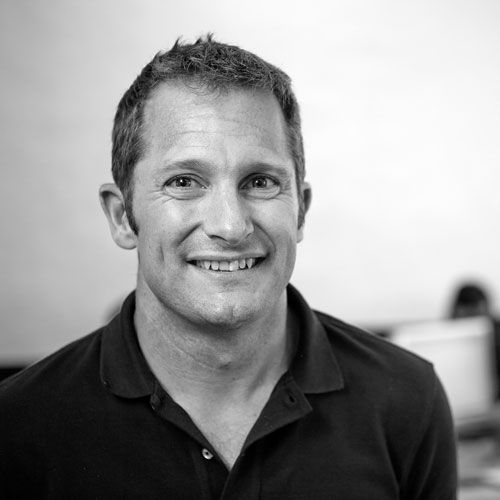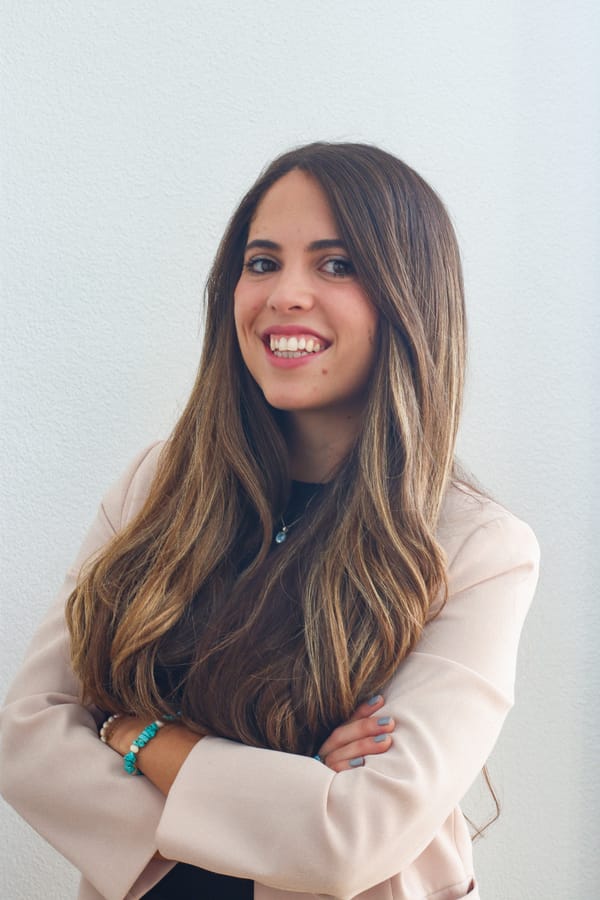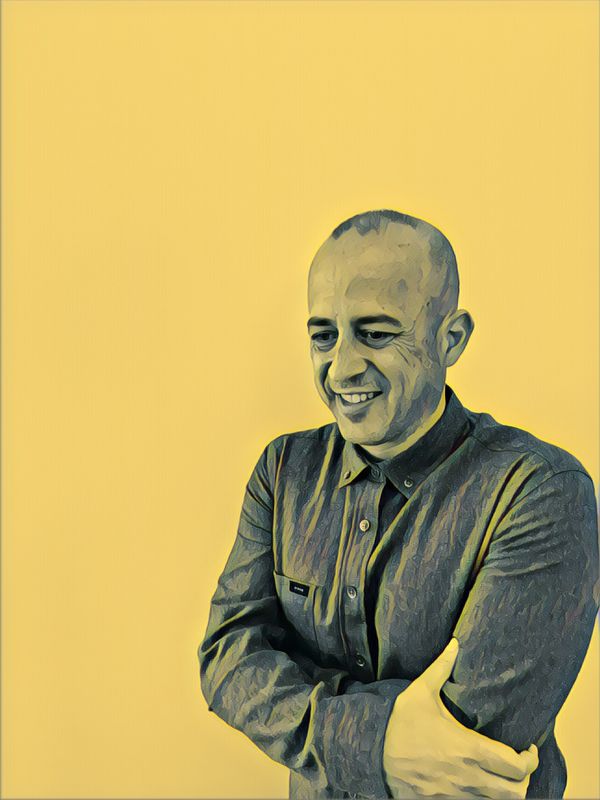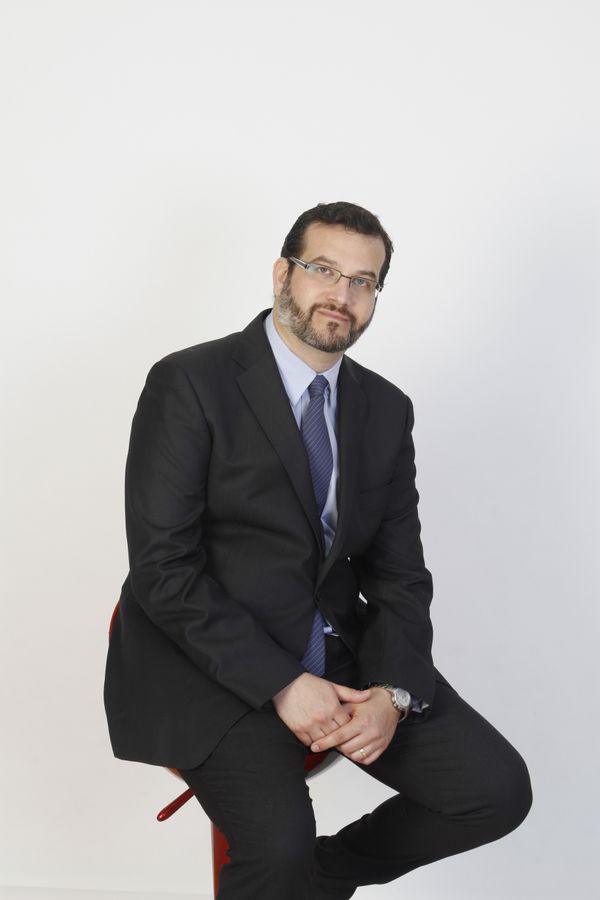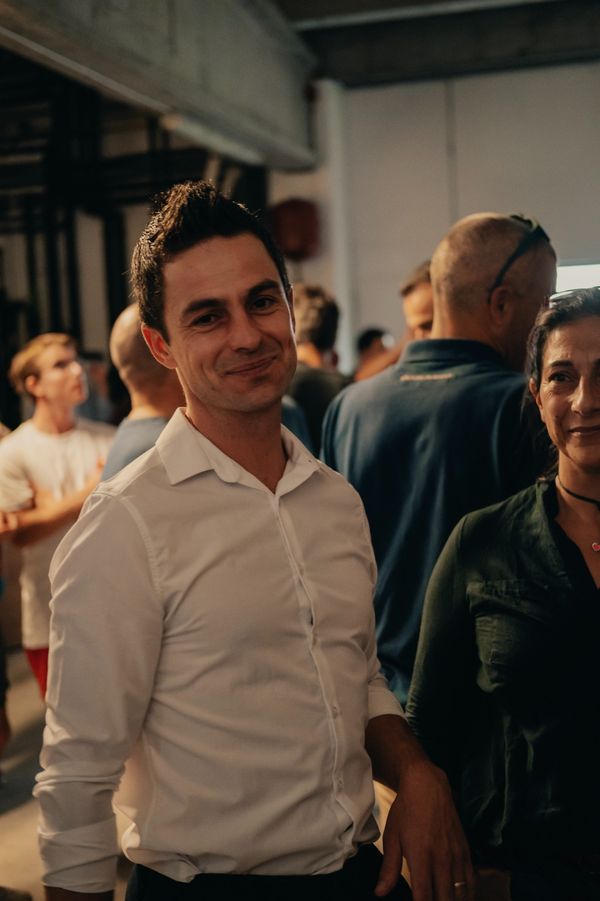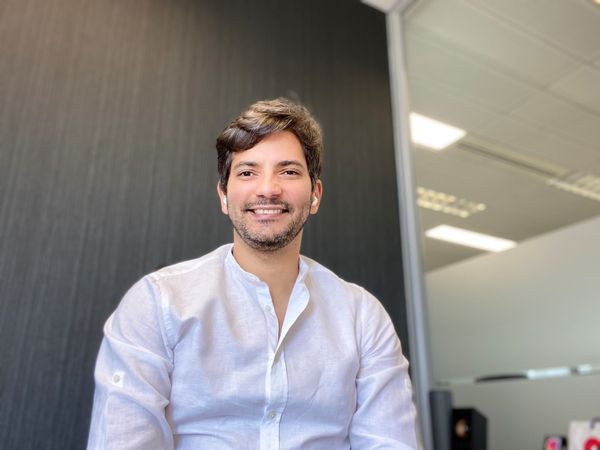Gran Canaria, Canary Islands, Spain
Happiness, that elusive state many of us chase, remains a concept that escapes precise definition. But when career and personal accomplishments intersect, the link between work and well-being becomes a central aspect to explore.
So, how do we foster greater workplace happiness? English entrepreneur Richard Clarke set out to answer this question many years ago. Richard is co-founder of Secret Source, a UK-led, Spain-based tech agency. With 90% all-time staff retention and 90% client retention since 2019, Secret Source has unlocked the secrets to its workplace happiness — and made it the core of the company's mission.
Growing up happy
Like most, Richard's quest for happiness began with a journey to discover how to lead a happier life. He devoted years to learning the keys to his happiness and the happiness of others. The beginning of this journey can be traced back to his childhood years. "My parents had a company where I used to go when I was little, and everyone was happy, and there was a lovely family atmosphere, and I wanted to do that. I didn't really know how to do it, and I didn't know what the business was gonna be. I just wanted to have a nice company which I could run and have lots of employees that would be happy and love coming to work," he recalls.
Inspired by that experience, Richard grew up with the conviction that work didn't have to be a stressful, joyless ordeal in a toxic environment. He had always aspired to create a company; the missing piece of the puzzle was finding what to do. Richard started as an English teacher and then transitioned to teaching IT. As he immersed himself in the world of technology, his entrepreneurial spirit awakened, propelling him to set up his first small-scale company (a solopreneur website development venture).
It was in 2014 when he met his co-founder, Ted Stresen-Reuter, and discovered their business aspirations were a perfect match. "My goal was to make this lovely big company where everyone was happy, and his goal was to make the best software in the world," he says. And so, Secret Source was born.
Finding value
Richard identifies one big problem in the current IT landscape: "It's just not much fun for anybody." In such an overcrowded and highly competitive sector, with a considerable pool of talented developers and many different companies to choose from, job hopping has become the norm. Staff turnover is usually high, with candidates jumping from company to company looking for higher salaries and more attractive benefits. In this landscape, providing a unique advantage is necessary for a company to attract and retain staff. "The secret would be to create a place where everybody stayed, and we had the stability the other companies couldn't offer."
Striving for employee happiness was not previously considered a "business strategy." It wasn't seen as a way to increase revenue but more of an afterthought. It felt like the right thing to do. However, growing evidence demonstrates that investing in staff well-being and customer satisfaction is directly linked to a boost in performance and profitability. A study conducted by the World Economic Forum in collaboration with Gallup has concluded that higher employee well-being is associated with higher company performance. The study's findings reveal that employee satisfaction is strongly linked to customer loyalty, lower staff turnover, and increased productivity, which translates into higher business profitability.
With this growing body of compelling evidence, Richard plunged into the science of happiness and thoroughly studied how to apply it to the workplace. Theoretically, it made sense, yet bringing it into practice was more complex than expected.
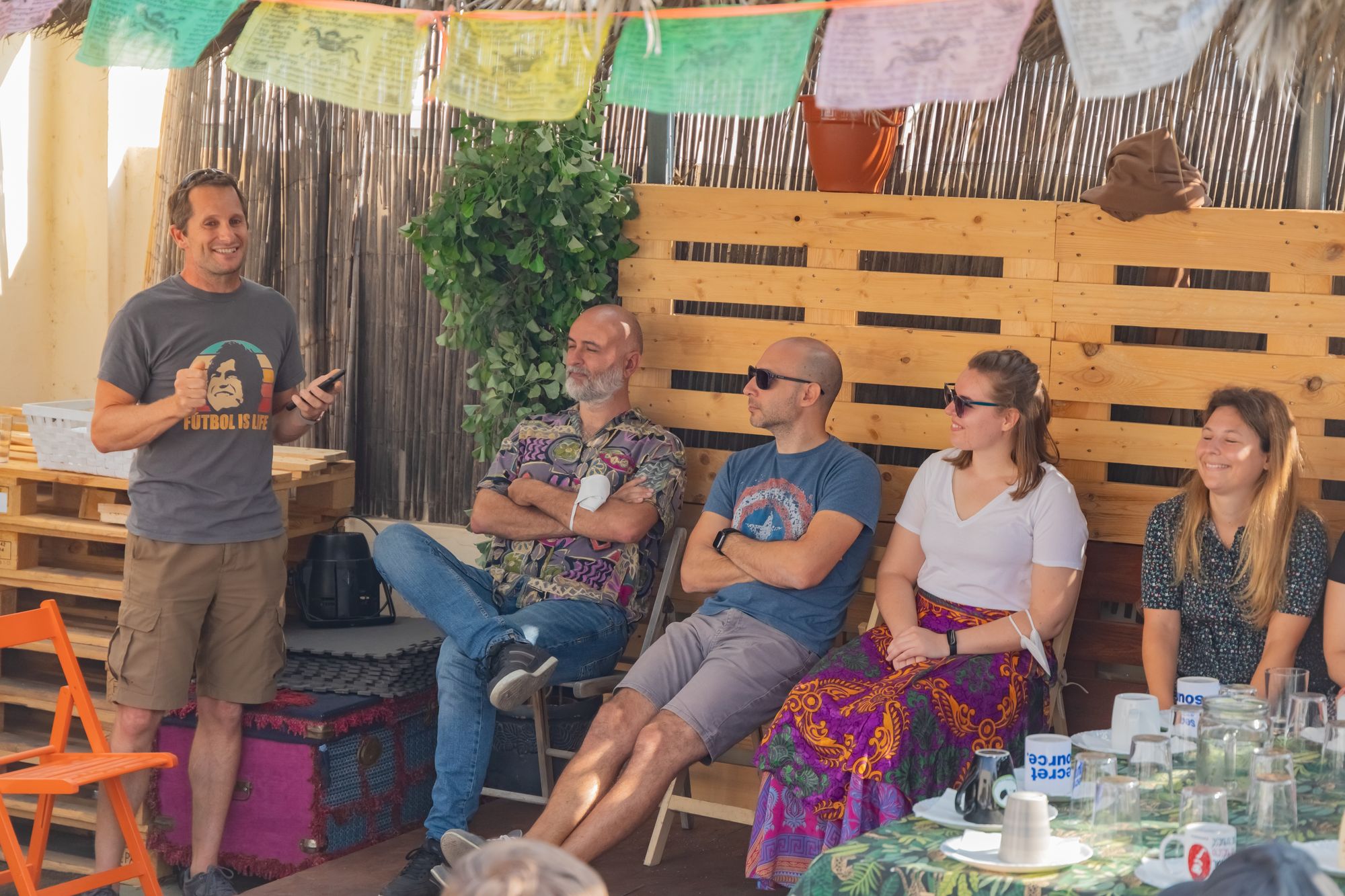
Building a culture of happiness
As it turns out, happiness goes beyond offering superficial, enticing perks. "I think the most challenging thing was we didn't really know what we were doing because nobody at the time knew how to make staff happy. They thought what you do is build a lovely office with bean bags and slides, and in the office, you provide free breakfasts and free fruit," Richard recalls.
When it comes to the tricky task of handling workplace happiness, there is no one-size-fits-all approach; happiness means different things to everyone. Suppose there are as many perceptions of happiness as there are people. In this case, understanding everyone's perspective becomes paramount: "If we wanted to make our staff happy and our clients happy, we had to know if they were happy in the first place, and we have to know when they're not happy."
The solution sounds deceptively simple and within easy reach: measure happiness. But how do you measure such an intangible concept? Around four to five years ago, Richard began attempting it but soon realized that some individuals, mainly clients, weren't always truthful. This led him to discover the concept of psychological safety. "I think, in my opinion, this is the bedrock; it's the thing that you have to do first. Once you get psychological safety in a team and get psychological safety with your clients where they feel they can be honest with you, you can ask the questions. You get honest answers when they're not feeling happy. They tell you why, and you can do something about it," he explains.
Psychological safety comprises four different stages:
- Feeling included
- Feeling safe to learn
- Feeling safe to contribute
- Feeling safe to challenge
To achieve this, Secret Source implements a three-step approach: educating, building personal relationships, and monitoring. Firstly, people must understand what a psychologically safe environment looks like, why it's significant, and what their role is in making others feel safe. Building personal relationships is equally important as it makes communication and collaboration easier. Finally, as teams and projects change, regular check-ins are essential to ensure things are running smoothly.
But even if people feel psychologically safe and measuring happiness is as simple as merely asking them, accepting one's happiness, or lack thereof, can be a bit more complicated. "There's a little secret to it that a lot of people don't know, and it's that — and we stumbled across this accidentally — you don't ask people 'How you're feeling? Are you feeling good? Are you feeling bad?' because it's quite difficult for someone to say, 'I'm not feeling happy.' So, we use a traffic light scale: red, orange, green. People feel a lot safer saying, 'I feel orange this week' than 'I'm feeling unhappy' because people [in the latter case] can feel that they're being judged. They can feel that they might be criticizing their boss, their company, and stuff like that," says Richard. This traffic light scale is still in use today and has even become a new language within the company.
Cracking the code
Through extensive experimentation and trial and error, Secret Source slowly paved its way toward cracking the workplace happiness code. But Richard faced significant challenges in the early years as he tried to understand how happiness worked. There was a big learning curve, and he realized that many things they tried had little effect. "Probably one out of every five initiatives we tried worked. And then we would expand on that."
Even though they weren't actively measuring happiness during the first years of the company, they still fostered a close relationship with the team and could discern whether an initiative was successful or not. "For example, we wrote in our employment contracts that we would buy our team a beer every Thursday after work so they could socialize with the rest of the team. They loved the idea, but once it was implemented, no one used it, and two years later, we removed it," Richard remembers.
Nonetheless, some strategies yielded more positive results: "When we introduced a career ladder, which showed what a developer had to do to get better and how that would affect their salary, it invoked discussion, and they worked with us to improve it. The engagement was really high. Five years on, it's the bedrock of our developers' career development, and it helps give them a sense that there are opportunities for growth in the company and how they can achieve it." The ladder is divided into five skills and seven career levels, defining success in each section and at each level.
In addition to fostering career development, being in the sunny Canary Islands certainly offers an added benefit for a company centered on happiness. Richard believes Spanish culture, characterized by a focus on family, leisure, and work-life balance, has contributed to their positive workplace atmosphere. "I think the Spanish culture has helped us because it's just, in my opinion, a happier culture. And when working with our clients, it's somewhere they can come and visit."
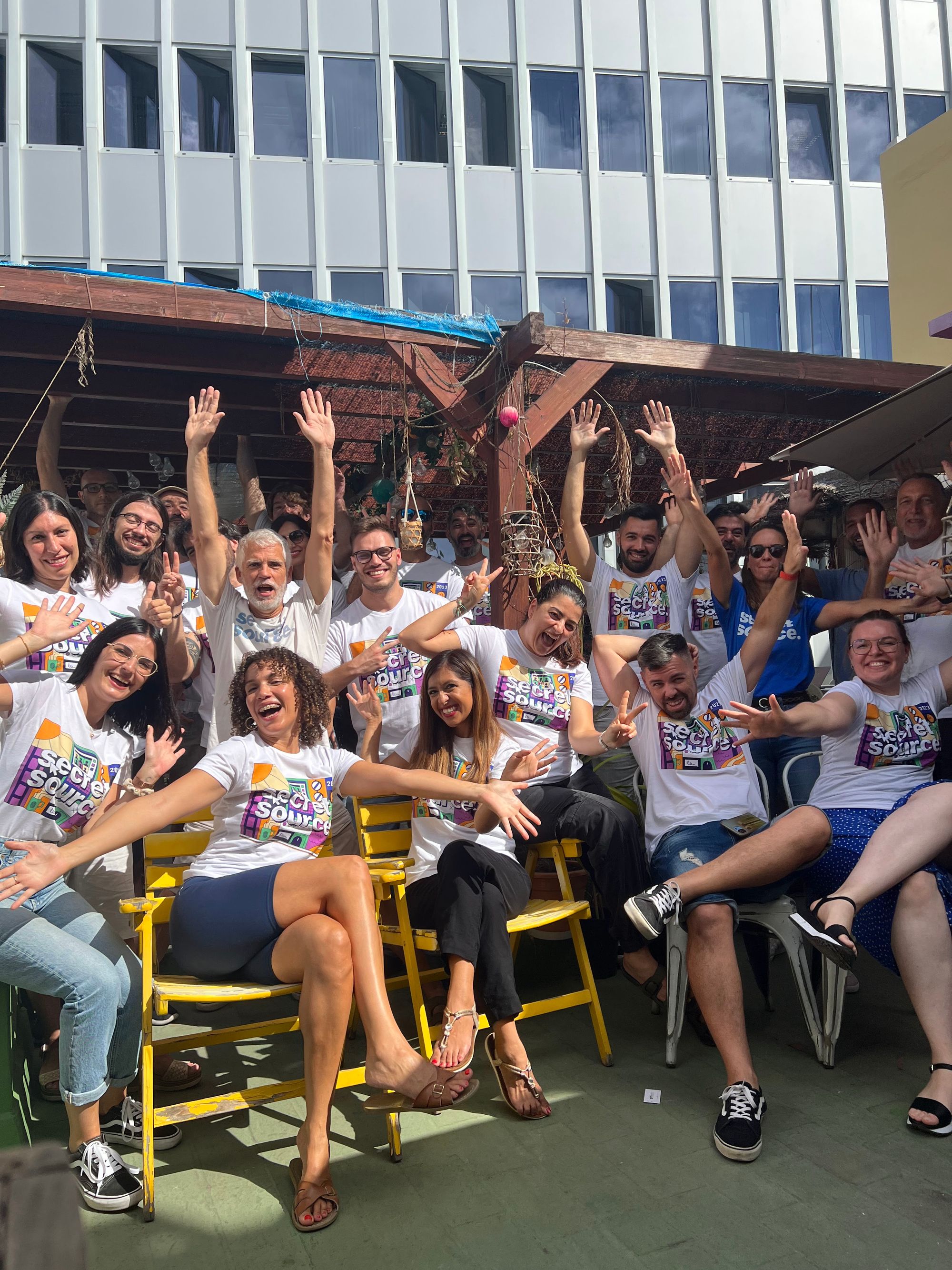
Bringing it all together
While most initiatives didn't work at first, the ones that did had a profound effect, both in increasing employee happiness and the team's understanding of what happiness meant in the workplace. Despite the challenges faced during the initial years, Secret Source now operates smoothly, with a happy team of developers, some of whom have been with the company for seven years.
Richard and his team keep working hard to consistently align their practices with emerging research in workplace happiness. Today, the company focuses on research and documents like the Surgeon General's Framework for Workplace Mental Health and Well‑Being. Like Maslow's hierarchy of needs, this framework establishes five essentials, each grounded in two human needs: protection from harm, connection and community, work-life harmony, mattering at work, and opportunity for growth. These categories guide all of Secret Source's decisions and operations regarding employee well-being.
Regarding client relations, in placing customer happiness as one of their main Key Performance Indicators (KPIs), they've found a way of staying competitive within the overcrowded IT sector. "And we found that by measuring that, by making those our priorities, everything else just happens naturally," Richard adds.
Like they measure employee well-being on the traffic light scale, a similar method is applied to their clients. "Every month, we measure customer happiness on a red, amber, green scale. We send out an email and then speak to every customer every month, specifically about their happiness and satisfaction with the project — a kind of informal retrospective. We do this to ensure high levels of psychological safety with our clients and to make sure we can address any issues very early and also be able to tell our teams when they are doing well," says Richard.
Secret Source's unique selling proposition (USP) revolves around providing the stability the IT sector usually lacks, which is crucial when pitching to clients. Their core message involves explaining the direct connection between happiness and profitability and showcasing how it contributes to long-term benefits. "Not everybody understands it, but the ones that fully understand it fully buy into it. There [are] hundreds of studies that show that happier staff give more profit, but it's very difficult to persuade people because you can say, 'If you reduce your prices, you will get more profit, you will get more customers.' Yeah, that's easy to see. But happiness to profit is a difficult one for people to believe," Richard states.
Secret Source's success extends beyond its internal ethos: The company has made impactful contributions through partnerships with several organizations. Among Richard's proudest achievements is their collaboration with the UK's National Health Service (NHS), which helped address a critical issue with perinatal wards: "We built this app so they could see where beds are available in the country. We just did it as a trial app in one hospital or a group of hospitals, and now it's used by the whole NHS and all the perinatal units in the UK. And we won an award for it. That one was [the proudest] because it had the most impact. People benefit from it on a daily basis, which is really nice."
A vision for the future
Richard has discovered that entrepreneurship is more challenging and demanding than initially envisioned. Though the lows have been lower than expected, the highs have also been higher. "Would I do it again? Well, I don't know. But when things go well for me, when I get a new staff member, when one of my staff has a baby… those are the magic moments."
As for the future, he harbors great ambitions for Secret Source: "We want to grow to 80-100 people. We believe that is the optimal size for our company. At 80-100, we can maintain the culture and provide career opportunities for all our team [members]. Happiness will always be the foundation of the company, as we believe that to build the best products... our teams need to be happy. Research shows that the factors that help someone feel happy at work are the same factors that improve performance in teams, so by continuing our focus on helping our team feel safe, showing them how to feel their work has a purpose, we will naturally produce better work."
On a more personal level, aligned with his passion for teaching, Richard aspires to impart his knowledge to other companies and share Secret Source's guiding philosophy. He is currently writing a book to teach companies how to make teams happier. "This is my dream. I'd like to teach other companies in our sector — well, not just in our sector — how, if you focus on the happiness of your team and your clients, it will bring more benefits than you can ever imagine. That's what I would do if I wanted to have a legacy. If I wanted to be remembered for something, it would be that Secret Source was the company that taught the rest of the world that staff well-being and customer happiness [are] actually more important than anything else."
There is currently a substantial amount of evidence supporting Richard's initiatives. Employees who believe their employer cares about their well-being are 69% less likely to actively search for a new job and three times more likely to be engaged at work than other employees. While being friends with every colleague in the workplace may be an unrealistic expectation, cultivating an environment where everyone feels safe and comfortable should be essential.

